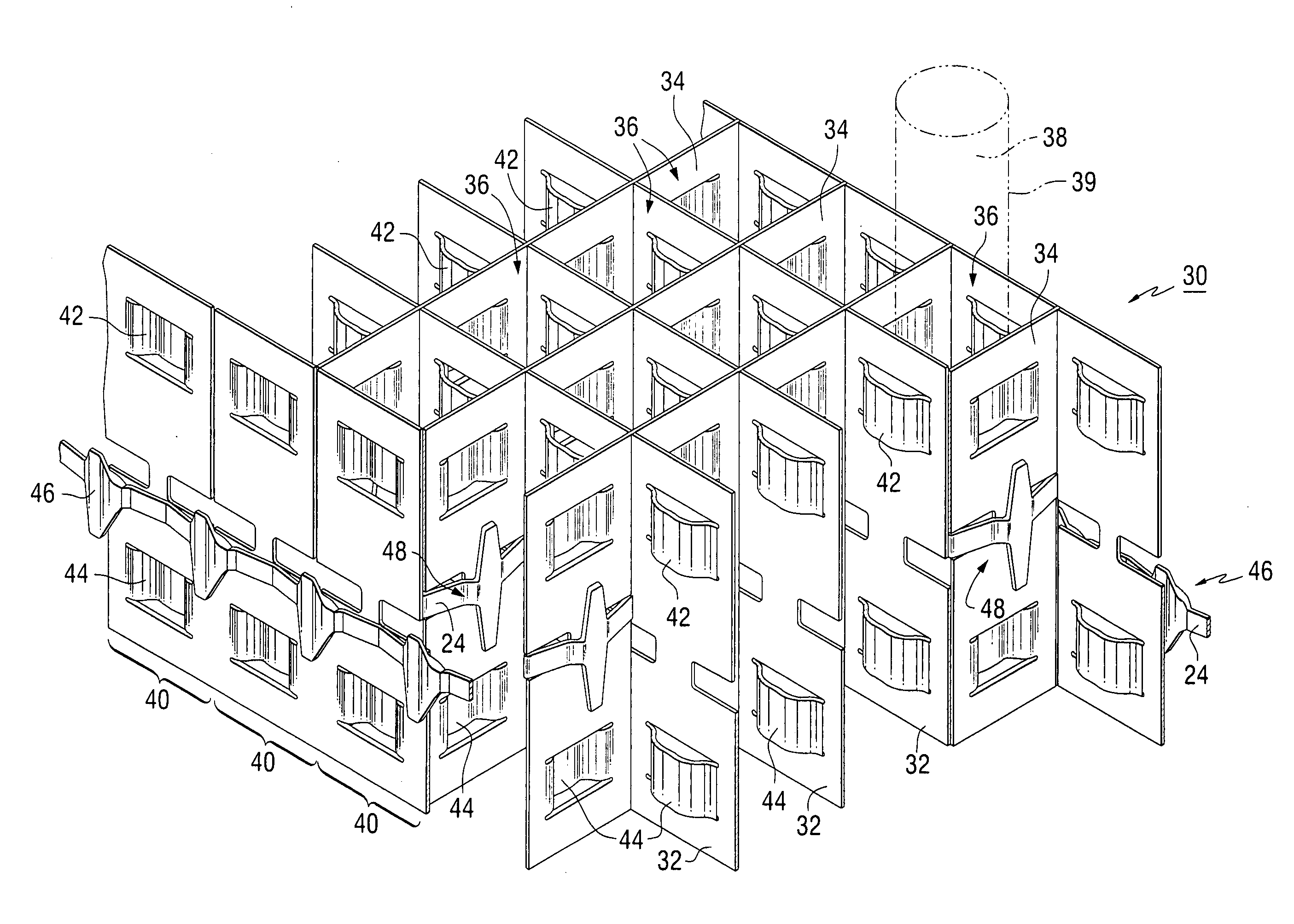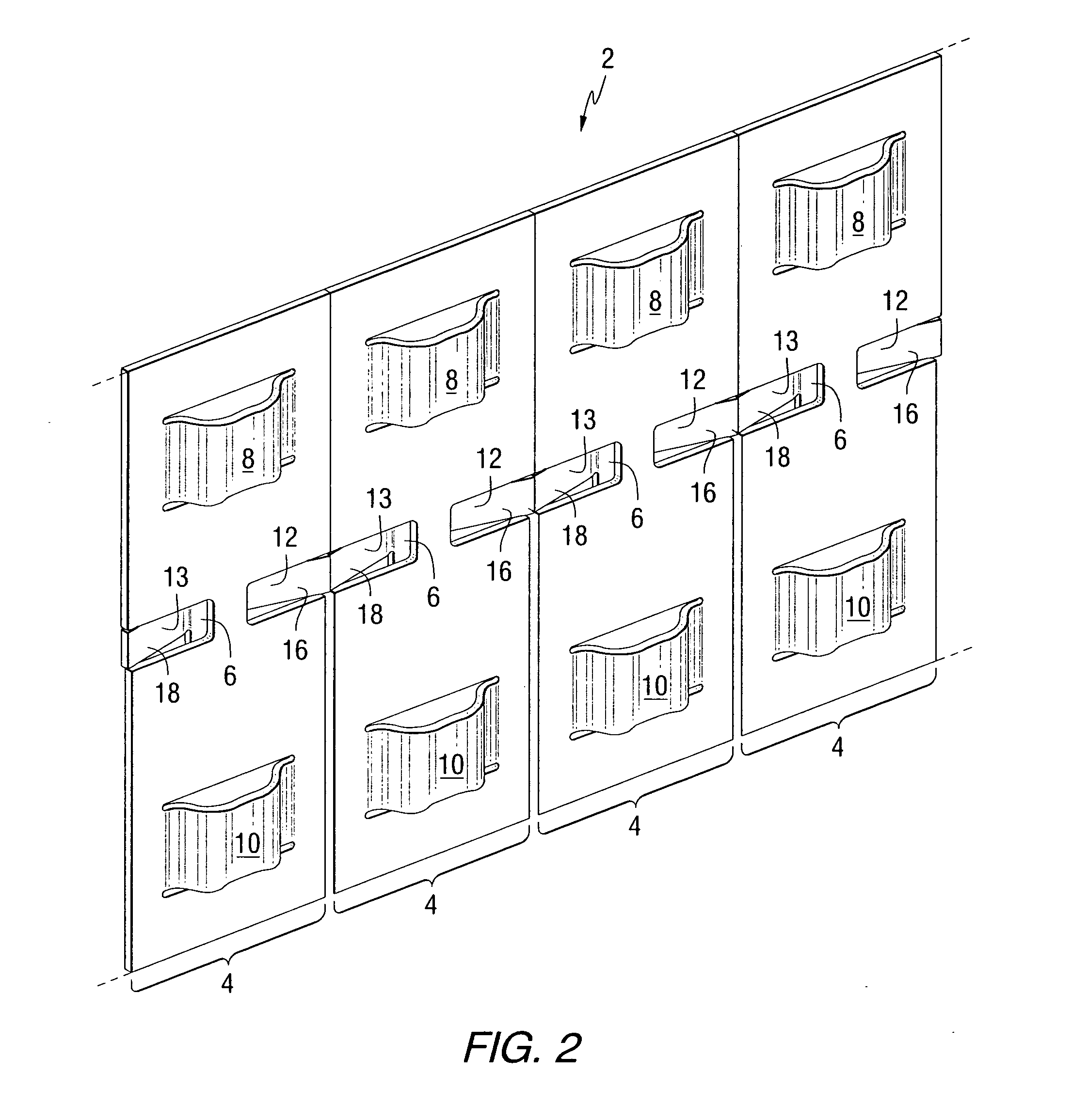Bi-alloy spacer grid and associated methods
a spacer grid and bi-alloy technology, applied in the field of bi-alloy spacer grids, can solve the problems of affecting the growth properties of the grid, forming gaps or empty spaces, and reducing the efficiency of the fuel, so as to mitigate the gap formation, the effect of reducing the gap formation
- Summary
- Abstract
- Description
- Claims
- Application Information
AI Technical Summary
Benefits of technology
Problems solved by technology
Method used
Image
Examples
Embodiment Construction
[0021] The present invention provides a bi-alloy spacer grid (BASG) in which the grid straps and springs are made using different zirconium alloys to mitigate the formation of gaps between the fuel rods and grid support structures (i.e., the springs and dimples). The grid straps are made from a relatively low growth zirconium alloy, and the springs are made from a relatively high growth zirconium alloy. As used herein, the phrase “relatively low growth” refers to a material property wherein when subjected to irradiation, the material exhibits relatively little growth (i.e., thermal expansion). Conversely, as used herein, a material having a “relatively high growth,” when subject to the same level of irradiation experiences significantly more growth than the low growth material. The springs are coupled to the grid straps by welding, mechanical interference, or secondary forming in place (e.g., without limitation, stamping). As employed herein, the statement that two or more parts are...
PUM
 Login to View More
Login to View More Abstract
Description
Claims
Application Information
 Login to View More
Login to View More - R&D
- Intellectual Property
- Life Sciences
- Materials
- Tech Scout
- Unparalleled Data Quality
- Higher Quality Content
- 60% Fewer Hallucinations
Browse by: Latest US Patents, China's latest patents, Technical Efficacy Thesaurus, Application Domain, Technology Topic, Popular Technical Reports.
© 2025 PatSnap. All rights reserved.Legal|Privacy policy|Modern Slavery Act Transparency Statement|Sitemap|About US| Contact US: help@patsnap.com



